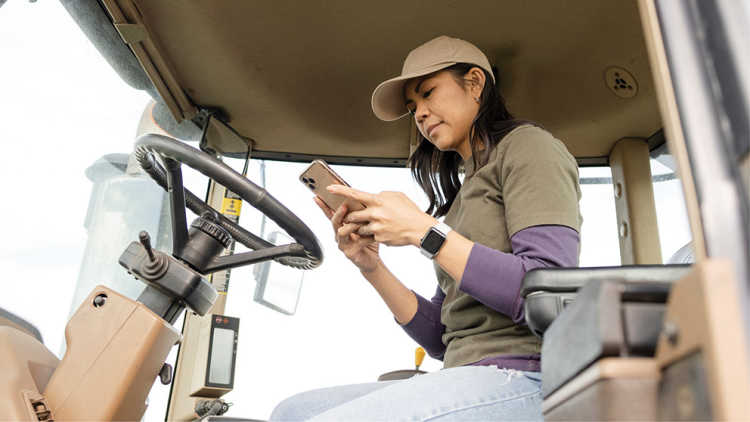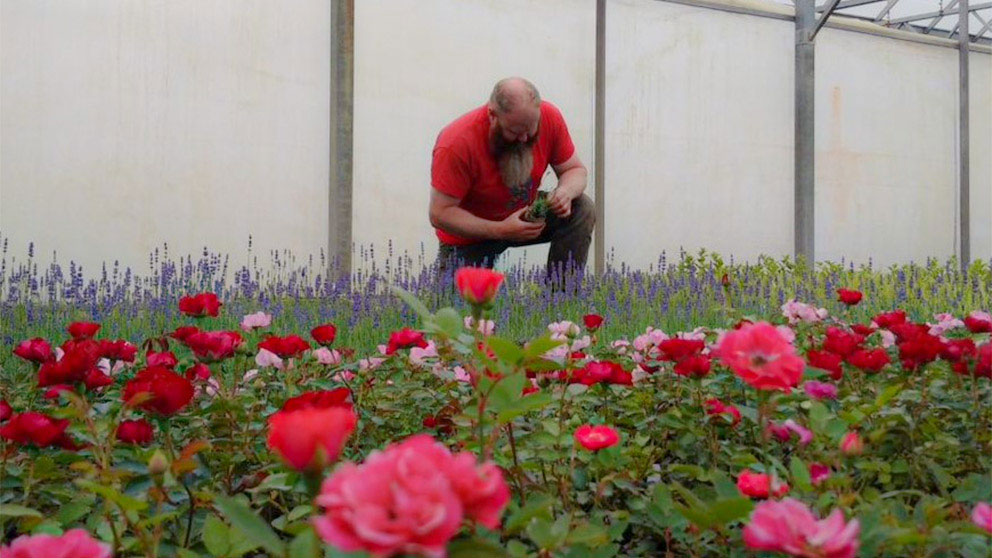Using technology to shape workplace behaviours

As the CEO of your farm business, what do you think of when you hear the terms workplace culture and technology? Is technology helping your employees feel empowered to do their work, or are they doing their jobs despite the systems they’re working with?
At its best, technology enables people to do their jobs with excellence and enthusiasm.
At its best, technology enables people to do their jobs with excellence and enthusiasm. When planning and preparing, it’s worth considering the systems workers are currently using and what tools would help them be more effective in their jobs. Taken a step further, the right technology can even help build the kind of workplace you want for your farm business.
So how can technology encourage employees to act in a way that reflects and builds the culture and behaviours you want? Reflect on the values that are important to the success of your farm business. Values that come to mind may be quality, collaboration and efficiency. Since technology is so integral in how we communicate, use it to foster a culture that will help meet your business goals. The right technology can clarify protocols, promote safety, and even help meet the requirements for specific certification programs.
The range of technology options are seemingly limitless, and the examples below are offered as suggestions to generate ideas for you as the farm CEO.
Agriculture-specific software
Technology can help engender a sense of responsibility around a specific purpose, such as biosecurity. For example, a large agricultural company is using Farm Health Guardian, a software platform to strengthen biosecurity and reduce the risk of disease transfer. The messaging feature of the app allowed them to alert company employees about high-risk manure being spread in a specific area.
The advisory read “Please be aware that high risk manure is being spread out of Finishing Barn 21 next week, May 10-12. Please avoid travel on High Rd and Fox Ln and avoid unnecessary travel to the area. Please ensure to follow all company biosecurity protocols.” It’s a short, simple message that made everyone aware of the need to heighten disease mitigation protocols and it reinforced a culture of biosecurity.
Free and broadly accessible
Technologies that are free and easily accessed can help improve communication and gain efficiencies from a management perspective.
One example is Slack, which allows direct messaging to one person or a group of people. Topic or project-specific “channels” can be used so the right people have access to the information they need. Slack or similar apps can help keep employees aware of what needs to be done next to keep moving work forward.
Farms can replace text messaging, emails, dry erase boards or handwritten notes with the app, providing a team-centred approach to communications and farm management by centralizing information. Wickstrom Dairies in Hilmar, California, has implemented Slack into their farm management and it has enabled farm managers to check in with employees or monitor progress through messages and updates, keeping a pulse on the farm even if they are offsite. Basic Slack is free, and paid packages are available for a monthly fee.
In another example, Google Translate, a free and widely accessible tool, lets foreign workers communicate with other farm employees until they’re able to take English classes. At one farm, an employee with hearing disabilities uses text messages to communicate with his boss.
Technology to help meet a goal or outcome
Some applications not tailored specifically to agriculture may still be focused around a goal or outcome important to your farm. For example, StaySafe is a lone-worker app that can be downloaded on a mobile device. If a worker has not moved for a prolonged period and has not checked in, the app will trigger a non-movement alert. Lone workers are prompted to check in or end their session to reduce false alerts. StaySafe or a similar app could be a valuable tool on farms where employees frequently work alone and could help build a culture that emphasizes the importance of workplace safety.
Other considerations
It’s worth considering that rural broadband could be a limiting factor for some of these opportunities and Wi-Fi may need to be upgraded to accommodate them. Some apps can still be used offline in poor connection areas or may function in a low-signal mode.
Keep in mind that you can have the best or most expensive technology, but if people don’t know how to or won’t use it, all the bells and whistles won’t matter. Any new technology or practice you want employees to adopt comes with a learning curve. Remember that technology is an enabler and never a substitute for good leadership.
Leverage the right technology
Technologies that make communicating fast and easy can be valuable tools in keeping everyone connected, engaged and focused on what matters. This is even more critical when in-person meetings are limited, such as during COVID-19 restrictions. Plus, we can all relate to situations when day-to-day activities or priorities override behaviours that support broader business goals, such as biosecurity or worker safety. Invest in the right technologies so everyone can meet the overarching goals of your farm.
Key points to remember
Focus on leadership – technology only enables performance
Reflect on your business goals
Allow for a learning curve
Consider internet speed
Be sure technologies will integrate with existing systems
From an AgriSuccess article by Lorraine Stevenson-Hall.

Why it’s important to provide good instructions and a framework that allows employees to understand their role.